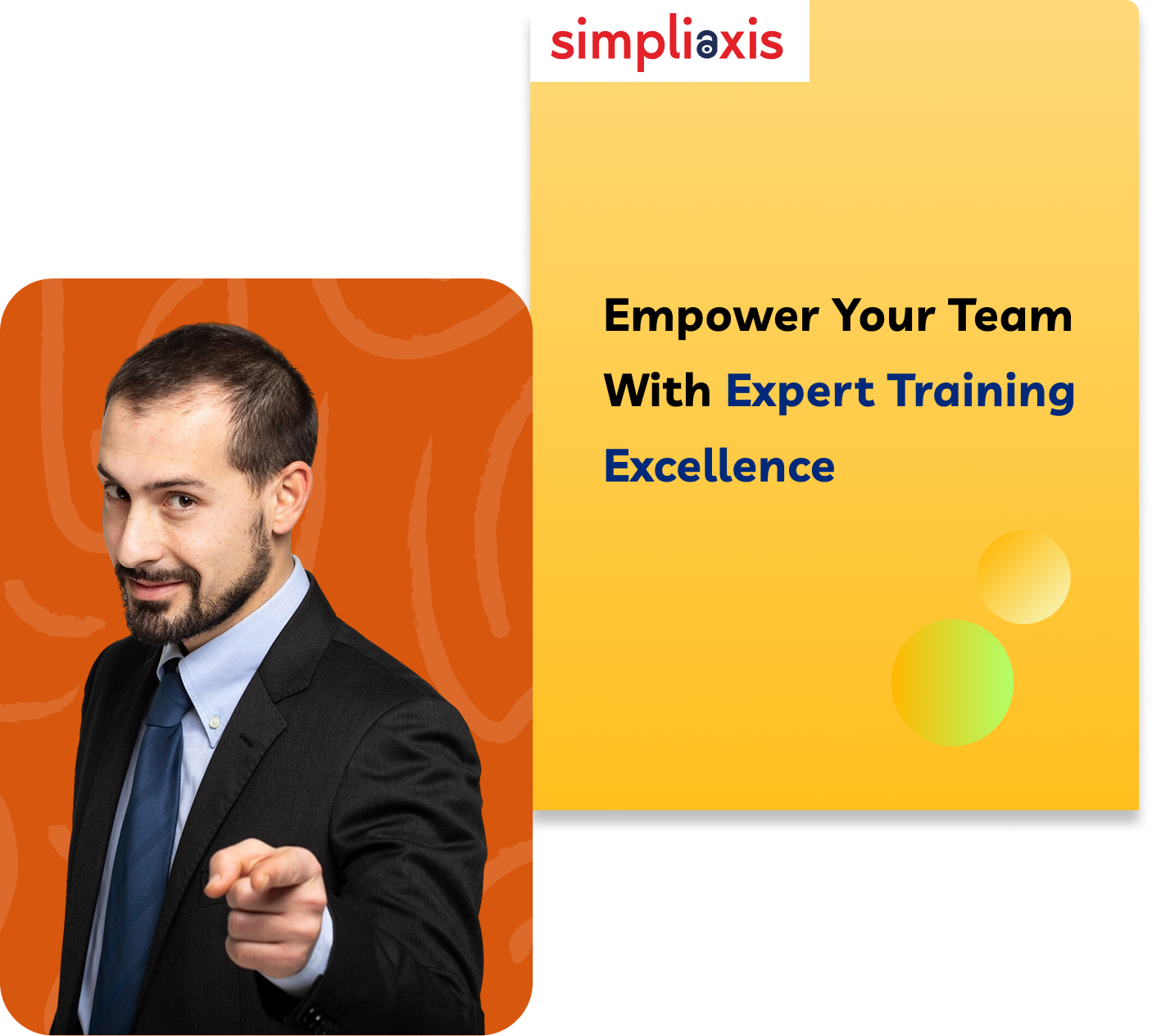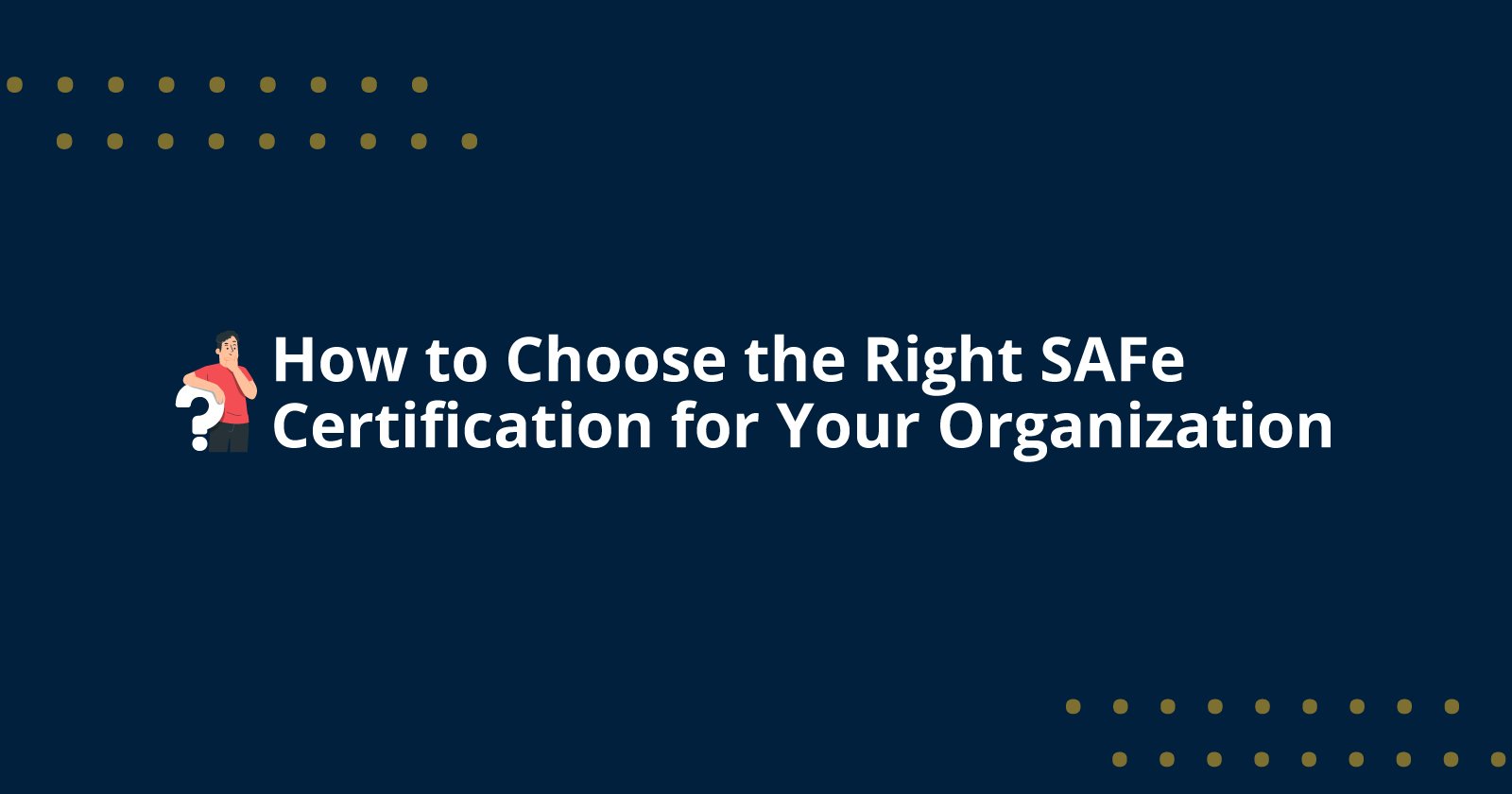Introduction:
Most of the modern business enterprises use Agile frameworks as their primary methodology to get faster deliveries and better customer satisfaction alongside innovation. Organizations that want to implement Agile at varied levels of their operation select Scaled Agile Framework as their preferred framework.
The increasing adoption of SAFe, alongside, produces a growing number of certifications based on its structure. Every position within an organization possesses a specific SAFe certification format that addresses its established duties. Organizational leaders must determine the correct SAFe certification that suits their team’s or organization’s needs.
This blog will lead you through the selection process of Scaled Agile certifications, which matches your enterprise needs to bring the right knowledge and skills for large-scale business agility advancement.
Why SAFe Certifications Matter for Enterprises?
Before understanding the value of the SAFe Certification for individuals, it’s important to understand the wide range of value of SAFe certifications for each & every enterprise. Implementing SAFe is not just about training individuals—it's about transforming organizational culture, aligning strategy with execution, and fostering collaboration across traditionally maintained teams.
A well-planned certification journey helps your organization:
- Encourage Lean-Agile thinking across all divisions
- Facilitate expedited decision-making and value provision
- Need to clearly clarify your SAFe roles
- Boost Agile maturity and employee engagement
For product owners, managers, engineers, and leaders, selecting the right SAFe training can make a significant difference in transformation success.
Step-by-Step Guide to Choosing the Right SAFe Certification
1. Understand Your Organizational Goals
Every organization is different. Some organizations stand at the beginning of their Agile journey, and others focus on implementing SAFe across numerous Agile Release Trains. The direction of your certification depends on your current organizational position.
Ask yourself:
- What if you are newly starting to deploy SAFe?
- The organization requires leader training to lead the transformation process.
- Launch Agile Release Trains as the main focus of your work.
- Your organization requires training for each team role.
Your understanding of your objectives ensures you succeed in evaluating different SAFe certifications.
2. Identify the Key Roles You Need to Train
Delivering value at scale requires certain roles that SAFe identifies. A summary of typical SAFe jobs roles and the associated certifications can be found below:
Role | Recommended Certification | Ideal For |
| Executive Leaders / Transformation Agents | Leading SAFe® (SA) | Senior leaders, transformation teams |
| Scrum Masters | SAFe Scrum Master (SSM) | Team-level Scrum Masters |
| Product Owners / Product Managers | SAFe POPM | Product owners, product managers |
| Release Train Engineers | SAFe RTE | RTEs, program managers |
| Agile Coaches / Change Agents | SAFe Practice Consultant (SPC) | Internal coaches, consultants |
| Architects | SAFe for Architects | System, solution, and enterprise architects |
| Development Teams | SAFe for Teams | Developers, testers, team members |
By understanding your team members’ & organizations requirements, you can target the right certifications, you ensure targeted and relevant learning outcomes.
3. Consider the Level of Organizational Maturity
New organizations beginning their Agile or SAFe implementation should begin with certifications that establish basic principles in these frameworks.
- Leading SAFe® (SA) explores the essential elements of SAFe methods combined with Lean-Agile thinking and explains how to guide an Agile transformation process. Enterprises beginning their SAFe journey should pick this specific certification because it provides optimal alignment between leadership and team activities.
- The SAFe for Teams program delivers the most value to team members collaborating on Agile Release Trains. The training instructs participants about working together and producing results by forming plans and conducting repeatable delivery cycles.
- The SAFe RTE certification is ideal for organizations that reach a high maturity level of implementation alongside organizations That have already initiated their Agile transformation.
4. Align Certifications with Strategic Initiatives
Different business goals require different competencies. Here's how to align SAFe certifications for managers and teams with strategic initiatives:
- Digital Transformation: Leading SAFe®, SAFe Agile Product Management, SAFe Lean Portfolio Management (LPM)
- Product Innovation: SAFe POPM, SAFe Agile Product Management
- Operational Efficiency: SAFe Scrum Master, SAFe for Teams, SAFe DevOps
- Enterprise Architecture Modernization: SAFe for Architects, SAFe LPM
- Agile Coaching & Change Management: SAFe Practice Consultant (SPC)
Understanding which certifications support your strategic direction helps prioritize learning and development investments.
5. Don’t Overlook Leadership Training
In many SAFe transformations, a common risk is focusing on the delivery teams while neglecting leadership. However, sustainable agility requires an enterprise-wide mindset.
Certifications such as:
- Leading SAFe® (SA)
- SAFe Lean Portfolio Management (LPM)
- SAFe Practice Consultant (SPC)
These certifications are instrumental in enabling leaders to drive SAFe for business agility at every level of the organization—from strategy to execution.
6. Evaluate Certification Depth and Scope
Not all certifications offer the same depth. For example:
- SAFe Scrum Master (SSM) focuses on the role of Scrum Masters in the SAFe context. It’s more than just Scrum—it includes coaching skills, facilitation, and PI Planning
- SAFe POPM merges the responsibilities of both Product Owners and Product Managers, teaching prioritization, product backlog management, and customer-centric development.
- SAFe Release Train Engineer is a highly advanced course that focuses on orchestration, facilitation, and managing value flow across ARTs.
When comparing SAFe certifications, make sure to match the scope of the course to the actual responsibilities of your employees.
7. Choose Certifications That Scale With You
As your organization scales, professionals should align with their certification strategy. Consider pathways that allow professionals to deepen their expertise over time.
For example:
- Start with SAFe for Teams → progress to SAFe POPM or SSM
- Leaders can start with Leading SAFe® → progress to SPC for transformation leadership
- Architects may begin with SAFe for Architects → contribute to LPM initiatives
8. Leverage Certifications as Part of a Broader Enablement Strategy
SAFe certifications should be part of a broader enablement plan that includes:
- Coaching and mentoring
- Community of practices
- Agile tooling and technology
- Metrics and feedback loops
Training without reinforcement leads to a waste of knowledge. Complement certification training with ongoing learning, workshops, and practice.
Top 5 Certifications for Enterprises to Consider
Here’s a summary of the best SAFe certifications for enterprises looking to build agile capabilities at scale:
- Leading SAFe® (SA) – For executives, managers, and change agents to understand and lead Agile transformations.
- SAFe for Teams – Empowers development teams to work effectively on Agile Release Trains.
- SAFe Product Owner/Product Manager (POPM) – For roles responsible for managing backlogs and defining features.
- SAFe Scrum Master (SSM) – Prepares Scrum Masters to support Agile teams and facilitate PI Planning.
- SAFe Practice Consultant (SPC) – The most comprehensive certification for those driving SAFe implementation roadmap steps.
Conclusion
The selection of a suitableSAFe certification varies depending on specific organizational needs since there is no single answer for this question. The selection depends on business targets together with necessary support roles and Agile transformation level.
Your organization will achieve maximum benefits from SAFe business agility by adopting a strategic training strategy that targets specific goals and combines certification training with practice sessions and coaching.
Your journey to enterprise agility requires the selection of proper knowledge as its starting point. Leadership teams, along with change agents and all personnel, get better results from delivering value faster and at higher quality when they hold appropriate Scaled Agile certifications.
















